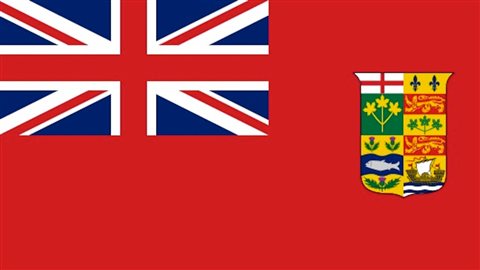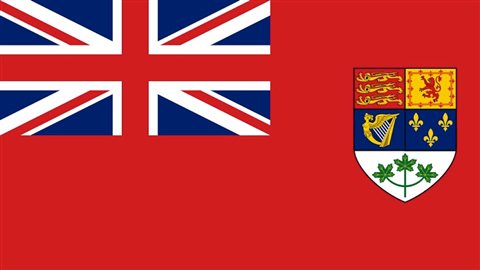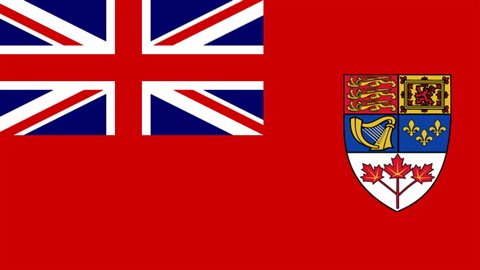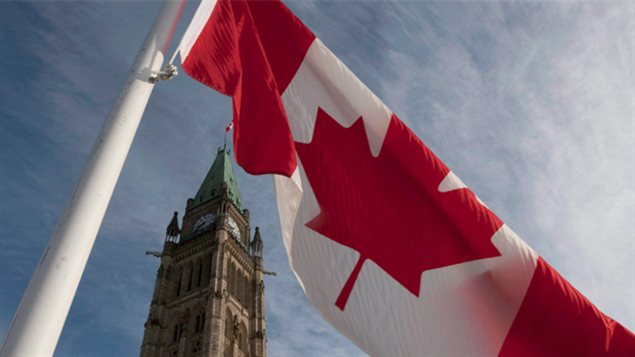Canada is still a relatively young country, but our national flag is even younger. The Canadian Maple Leaf, now one of the most recognized flags in the world, celebrates its 50th anniversary this Sunday February 15th
Throughout most of our history, the British Royal Union Flag was the official national flag,
There had been a series of semi-official flags based on the British Red Ensign. The provincial flags of Ontario and Manitoba are still based on the Red Ensign, and the Canadian Red Ensign is also part of the colour party of the Royal Canadian Legion alongside the Maple Leaf
When the Dominion of Canada was created, its first semi-official (de-facto, not de jure) flag was a Red Ensign-based design with the symbols of the four original provinces, Ontario, Quebec, Nova Scotia and New Brunswick 1871 in the fly.

From approximately 1873 – 1921, as new provinces entered Confederation, or they received some mark of identification (sometimes taken from their seal), that mark was incorporated into the shield. By 1921, it was made up of the coats of arms of the nine provinces then in Confederation.
However, by then this design in the fly was crowded and a bit confusing. Some versions also had the shield inside a white disc as well.
So that year, the government asked King Geroge V for a new Coat of Arms for Canada, subsequently designed by the College of Arms with the symbols representing founding cultures of England, Scotland, Ireland, and France. The earlier crowded design was changed by an Order in Council and the composite shield was replaced with the shield from the Royal Arms of Canada, more commonly known as the Canadian Coat of Arms in 1922. In 1924, this new version was approved for use on Canadian government buildings abroad. In 1945 an Order in Council authorized its use on federal buildings within Canada until a new national flag was adopted.

In 1957, a slightly more stylized version was produced, changing the leaves from green to red, and removing the women’s breasts from the irish harp symbol.
However, none of these were ever “official” flags of Canada.
With the Suez crisis, Canada was rejected asa mitigating presence in theatre because they were too “British” in uniform and symbols. This irked Prime Minister Pearson, who had been awarded the Nobel Peace Prize for his efforts in resolving the Suez Crisis and inventing the idea of UN Peacekeepers.

With a feeling of Canada needing a distinguishing and unique (ie not British influenced) flag. Although the question had oftened been raised, no serious discussion began until the 1960’s as Canada’s centennial year 1967 approached.
Pearson was eager for the country to have its own unique flag ito fly at the World exposition in Montreal for the 100th birthday of the nation.
The Maple Leaf had been suggested as a national symbol in the 1830’s well before Canada was even a country.
In the early 60’s a national debate began, and literally thousands of suggested designs were submitted. An extremely bitter political debate ensued as well, with large segments defending the Canadian Red Ensign.
In the end a simplified design, inspired by the flag of Kingston Ontario’s Royal Military College was chosen using Canada’s official red and white colours, and a stylized single Maple leaf.
It was unfurled officially on February 15th, 1965, in a ceremony in front of Parliament in Ottawa.







For reasons beyond our control, and for an undetermined period of time, our comment section is now closed. However, our social networks remain open to your contributions.